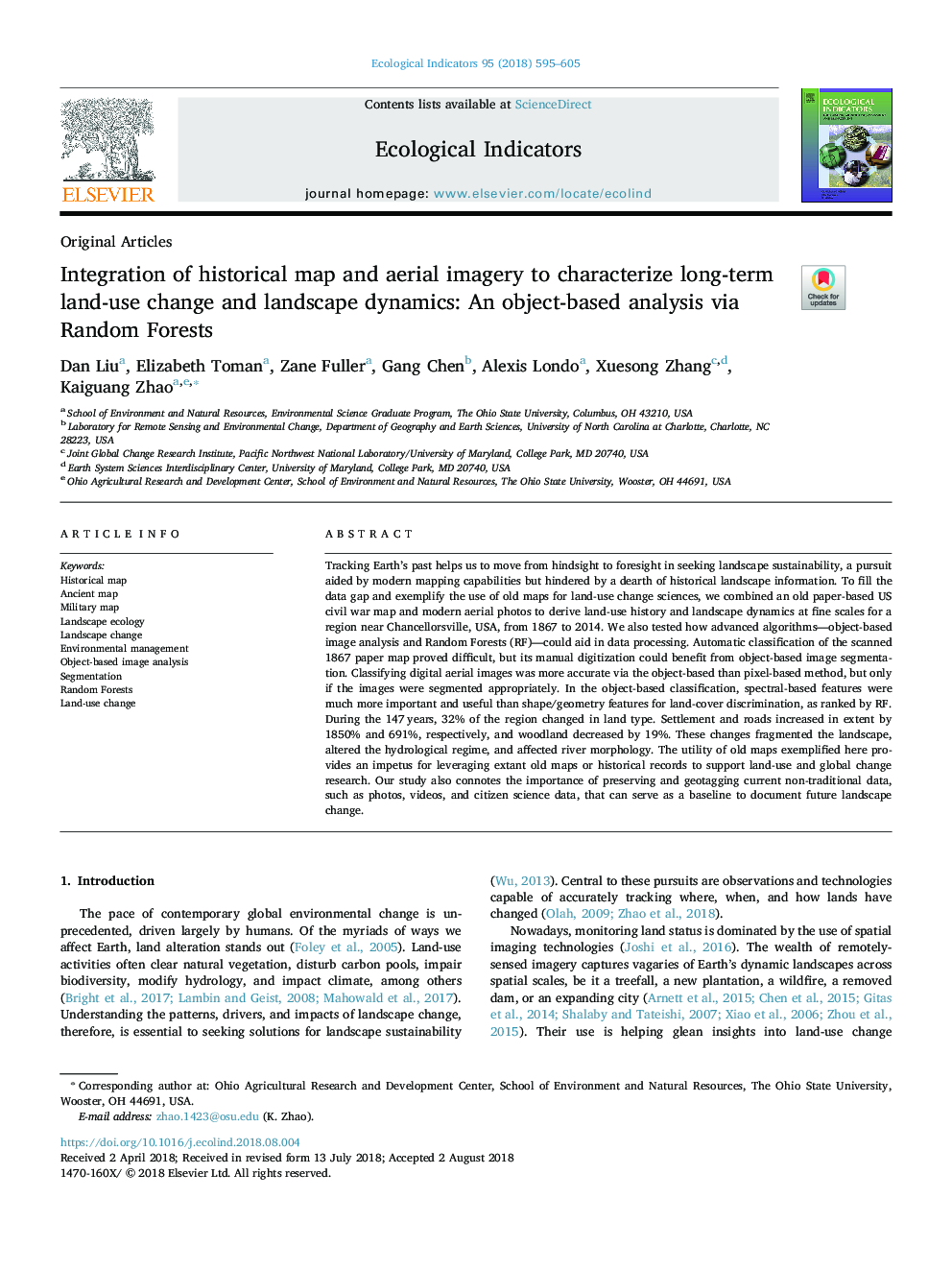| Article ID | Journal | Published Year | Pages | File Type |
|---|---|---|---|---|
| 8845006 | Ecological Indicators | 2018 | 11 Pages |
Abstract
Tracking Earth's past helps us to move from hindsight to foresight in seeking landscape sustainability, a pursuit aided by modern mapping capabilities but hindered by a dearth of historical landscape information. To fill the data gap and exemplify the use of old maps for land-use change sciences, we combined an old paper-based US civil war map and modern aerial photos to derive land-use history and landscape dynamics at fine scales for a region near Chancellorsville, USA, from 1867 to 2014. We also tested how advanced algorithms-object-based image analysis and Random Forests (RF)-could aid in data processing. Automatic classification of the scanned 1867 paper map proved difficult, but its manual digitization could benefit from object-based image segmentation. Classifying digital aerial images was more accurate via the object-based than pixel-based method, but only if the images were segmented appropriately. In the object-based classification, spectral-based features were much more important and useful than shape/geometry features for land-cover discrimination, as ranked by RF. During the 147â¯years, 32% of the region changed in land type. Settlement and roads increased in extent by 1850% and 691%, respectively, and woodland decreased by 19%. These changes fragmented the landscape, altered the hydrological regime, and affected river morphology. The utility of old maps exemplified here provides an impetus for leveraging extant old maps or historical records to support land-use and global change research. Our study also connotes the importance of preserving and geotagging current non-traditional data, such as photos, videos, and citizen science data, that can serve as a baseline to document future landscape change.
Keywords
Related Topics
Life Sciences
Agricultural and Biological Sciences
Ecology, Evolution, Behavior and Systematics
Authors
Dan Liu, Elizabeth Toman, Zane Fuller, Gang Chen, Alexis Londo, Xuesong Zhang, Kaiguang Zhao,
